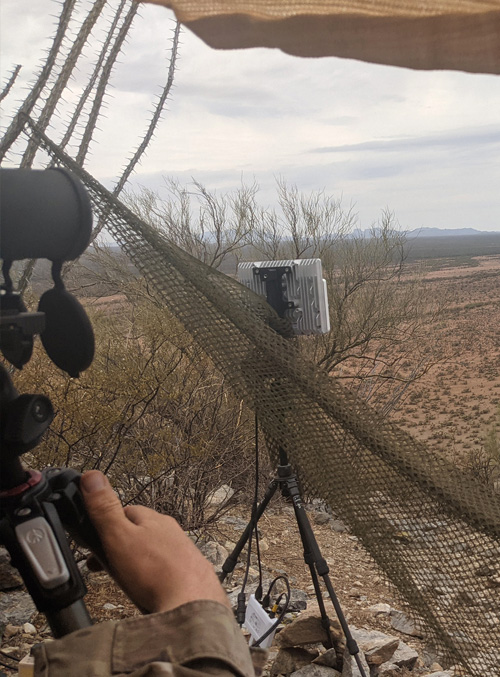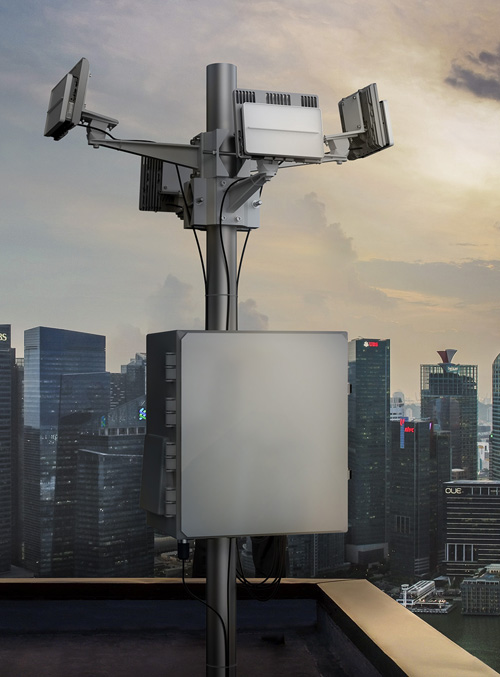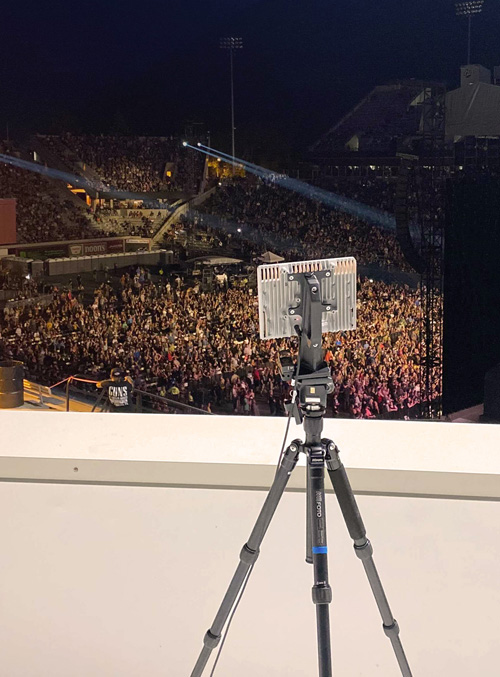PART 6
Improving Situational Awareness for Government Security Applications with Radar
For decades, government security devices used for border patrol, public safety, and asset security have relied mainly on fixed position cameras, video surveillance, and RF sensors. This combination of monitoring tools typically provides decent ground coverage, but very little air coverage for most scenarios. As threats continue to multiply in dangerous and creative ways, especially as drones have become inexpensive to acquire, easy to operate, and simple to hack, gaps in coverage for these new aerial threats exist when using fixed position cameras, video surveillance, and RF sensors.
Even if a ground sensor, such as an RF sensor, does have some ability to provide aerial monitoring, drones can be made nearly invisible to these sensors. Plus, these agencies are also facing demands to multiply ground surveillance range without raising individual privacy concerns. These two needs can only be met by adding radar to these layered threat detection solutions.
While the size, weight, power, and cost (SWaP-C) of traditional radar systems prohibited government organizations from enhancing situational awareness with radar, a recent breakthrough in radar technology has changed this. New metamaterials electronically scanned array (MESA®) radar – a low-cost commercial off-the-shelf (COTS) product with ESA performance – is finally bringing the benefits of radar technology to applications outside traditional military and defense use cases. Let’s look at how several common government security applications can experience the benefits of incorporating MESA radar into their solution stack.
Incorporating Radar into Border Security Solutions
Border security is a critical part of ensuring our nation’s safety. At 5,525 miles, the United States shares the longest international border in the world with Canada. The US also shares the busiest border in the world with Mexico (1,951 miles). Protecting the 7,476 miles of border shared with our northern and southern neighbors is a big task as there are a number of pedestrian and airborne threats to monitor for.
In recent years, threats have become more sophisticated and the number of ultralight manned and unmanned aircrafts crossing borders has increased dramatically. For example, small, manned aircrafts are performing partial drops of weapons and narcotics at facilities across borders and drones are surveilling borders to find gaps in border patrol activity to determine where people can potentially cross undetected.
Instead of solely using optical and RF sensors for ground surveillance and some air surveillance, the Department of Homeland Security (DHS) now needs comprehensive tools that provide three-dimensional monitoring of all air and ground threats. By adding MESA radars to the stack of solutions, the DHS is greatly increasing situational awareness and border security intelligence. MESA radars are now providing the data foundation necessary for the DHS and border security to perform advanced classification and take next steps such as slewing long-range optical sensors for better object identification or taking additional mitigation steps such as jamming of a drone. Plus, MESA radars are proven to operate reliably without interruption for their lifetime, a crucial factor since these systems must be deployed in remote areas.
Enhancing Public Safety and Asset Security with Radar
Drones are also a growing problem for federal and state agencies charged with public safety for VIP events and sensitive assets. These organizations must have a defensive strategy in place to protect these assets and personnel from drones sent to cause harm as well as drones seeking intel on sensitive assets. This is challenging to do with tools such as RF sensors without potentially impacting individual privacy rights or interfering with existing wireless signals, especially as drone operations move from unlicensed to licensed portions of the RF spectrum.
Incorporating radar into the solutions stack provides a tactical advantage for keeping communities safe without causing any privacy concerns. The radar system enhances defense against all types of threats by both supplementing existing ground security systems and providing comprehensive air domain awareness. Public safety teams now have fast, high-fidelity airspace situational awareness data without causing any privacy concerns. These systems are also more comprehensive as radar can track dark drones, which RF sensors cannot do.
Since MESA radar is offered in a small form factor, there is a lot less weight for the end user to incorporate, and the system is easy to configure and move. This offers a strategic advantage as users do not have to lug around massive amounts of gear and these systems can easily be moved between locations as needs change.
Improving the Safety of Drone as First Responder Programs
Beyond monitoring for nefarious drones, radar is also a critical component for public safety agencies such as law enforcement or fire departments who are planning or operating Drone as First Responder (DFR) programs.
DFR programs are meant to have drones serve as an “eye in the sky” that provides additional information about a situation such as an accident, crime scene, or fire. This can be especially useful in scenarios that are especially dangerous for human first responders such as those involving hazardous materials, unpredictable weather, or locations that are difficult to access.
As part of this program, these agencies must ensure the airspace where the drone will fly is clear, especially if the drone will launch from an area where low-flying aircraft, such as helicopters launching from a hospital’s Flight For Life helipad, may be common. For these beyond visual line of sight (BVLOS) applications, MESA radar can serve as an excellent solution for monitoring the air space and providing easy-to-understand data that will greatly enhance the safety of these operations.
Creating Counter-Drone Solutions for Government Applications Using Radar
Whether securing fixed assets or a temporary perimeter for a VIP event, COTS MESA radar solutions bring the gold-standard in radar performance to government agencies seeking comprehensive 3D ground and air situational awareness. Therefore, a counter-drone solution stack used by any government agency should now include radar, a camera/optical sensor, an RF sensor, and possibly other types of sensors depending on the specific requirements of the situation.
In addition to serving as the baseline for providing object data, radar will also enhance each of the other sensors in the solution.
The radar and RF solution can work together to hear or see the object so that the radar can lock on the target and then slew and queue the camera to then identify the object – is it a bird or an actual threat like a drone? Then, depending on how the object is classified, the information can be escalated to the appropriate person for mitigation, or the system can trigger a further action.
Already in use across nearly all U.S. federal agencies, MESA radars provide on-the-move capabilities to extend field operations, creating an information advantage for government agencies charged with protecting public safety and a variety of assets.
In part 7, we will review how radar can be added to layered threat detection systems to enhance critical infrastructure protection.





